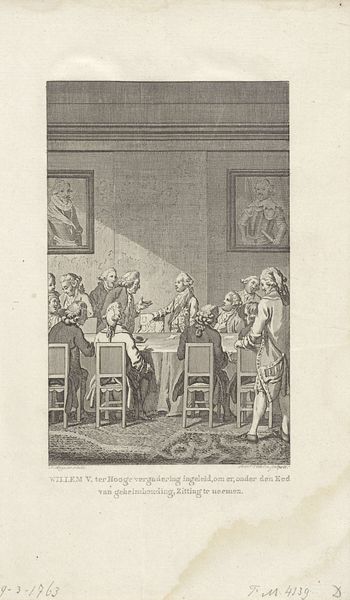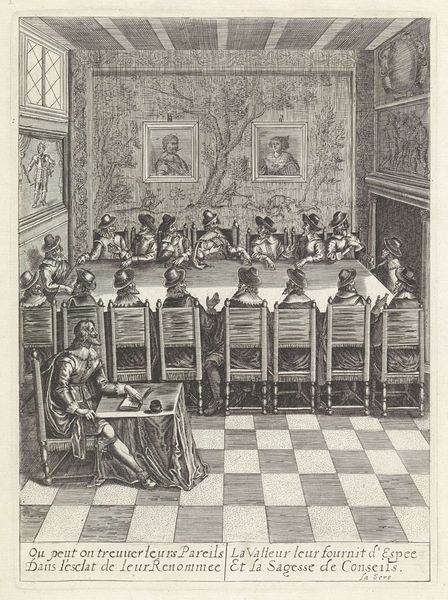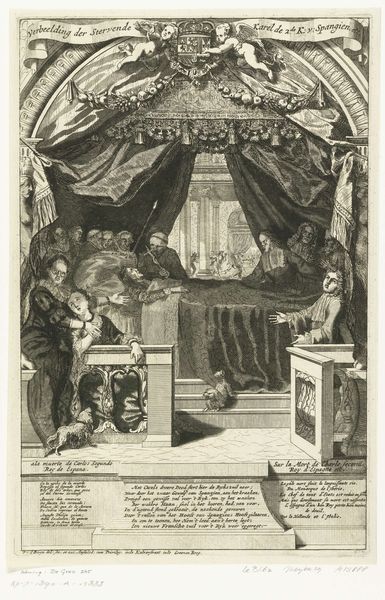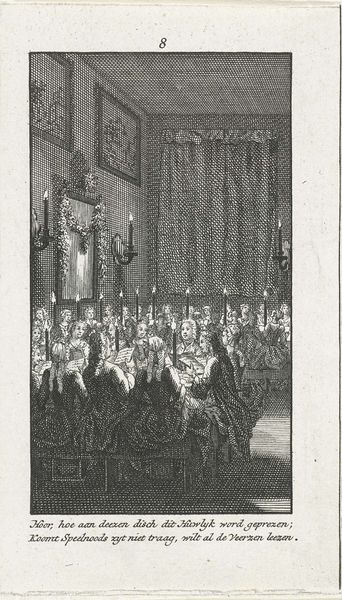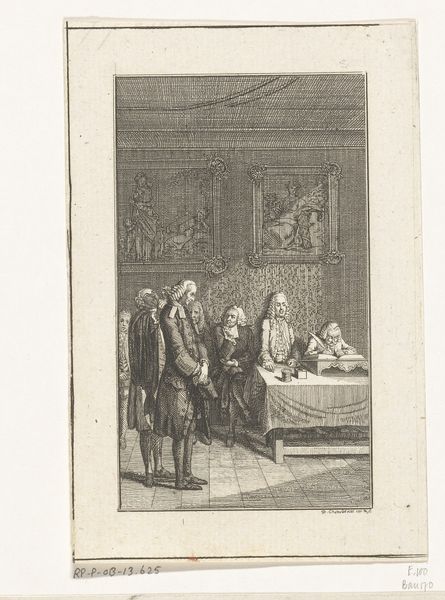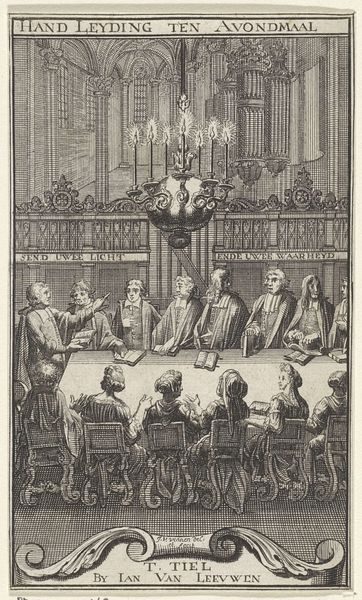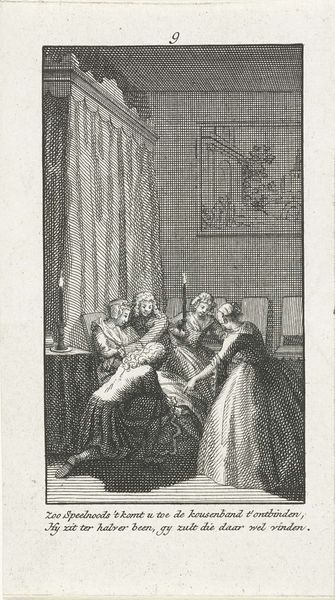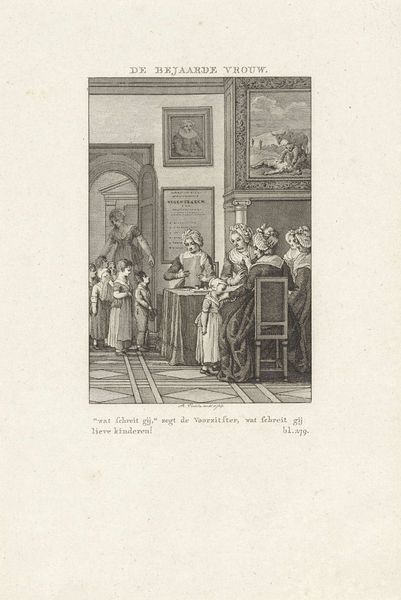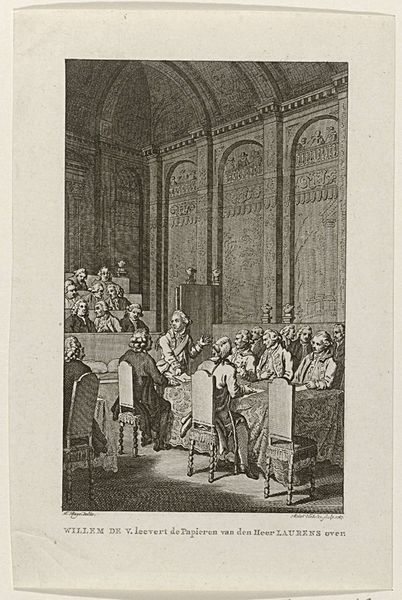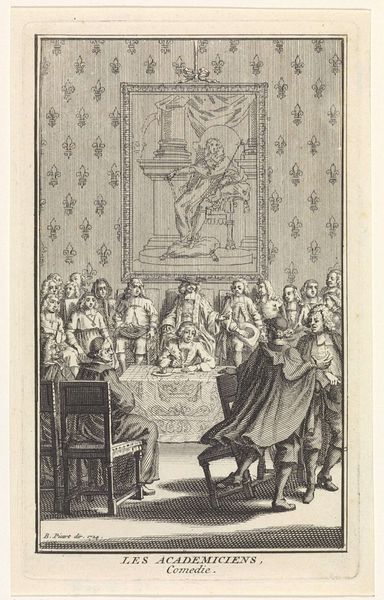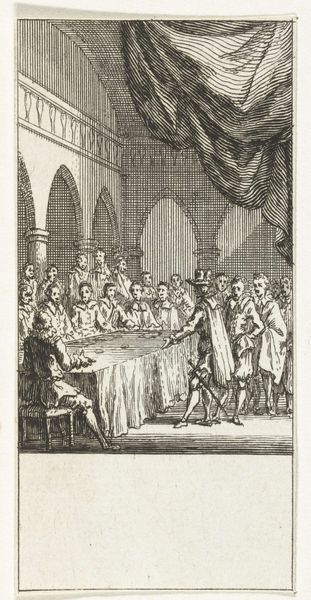
print, engraving
#
baroque
# print
#
old engraving style
#
genre-painting
#
history-painting
#
engraving
Dimensions: height 109 mm, width 62 mm
Copyright: Rijks Museum: Open Domain
Curator: This print, made sometime between 1740 and 1760 by Jan Caspar Philips, is titled “De ouders laten hun bijdragen vastleggen,” which roughly translates to "The Parents Have Their Contributions Recorded." It's currently held at the Rijksmuseum. Editor: It’s rather dimly lit, isn't it? The candlelight gives everything a sepia-toned dreaminess, like eavesdropping on a secret pact in a bygone era. Curator: Exactly! Philips really captures a feeling of hushed importance. It's rendered in that meticulously detailed baroque style, though it feels more intimate, almost like a genre painting depicting everyday life, than the grand history scenes common to the era. Look at how he uses engraving to suggest texture, the fall of the fabrics, the gleam of candlelight... Editor: Speaking of texture, the presence of the imposing, canopied bed really shapes how one interprets the social dynamic. Its grandeur and overt presence make it feel like more than a backdrop—perhaps the "marriage contributions" involve, and even implicate, the bedroom itself? Curator: I love that reading! This work offers such a fascinating window into societal negotiations. I can’t help thinking about how the inscription, ‘What the parents on both sides will give to the marriage, is neatly written down by Mr. Penlikkius’, puts emphasis on the economic dimension of a young couple's social contract. Editor: Precisely! Marriage as an economic strategy—a cornerstone of the patriarchy. It casts the whole scene as an arrangement about lineage and capital rather than affection. But there's more going on here, isn't there? Notice the abundance of witnesses, an indication that a collective blessing or participation, or perhaps simply a tacit enforcement of proper codes of behavior, is being performed through them as well. Curator: Absolutely, a public theater, even at its most seemingly personal or mundane. Jan Caspar Philips shows us how economics, love, family and power meet. And though the candlelit details initially convey such comfort, it quickly dissipates under the light of modern interpretation. Editor: It does serve to illuminate not only a past scene, but how that past shapes the present. What Philips managed to document in this engraving is more than an economic transaction; it is an ideological foundation that continues to affect lives today.
Comments
No comments
Be the first to comment and join the conversation on the ultimate creative platform.
